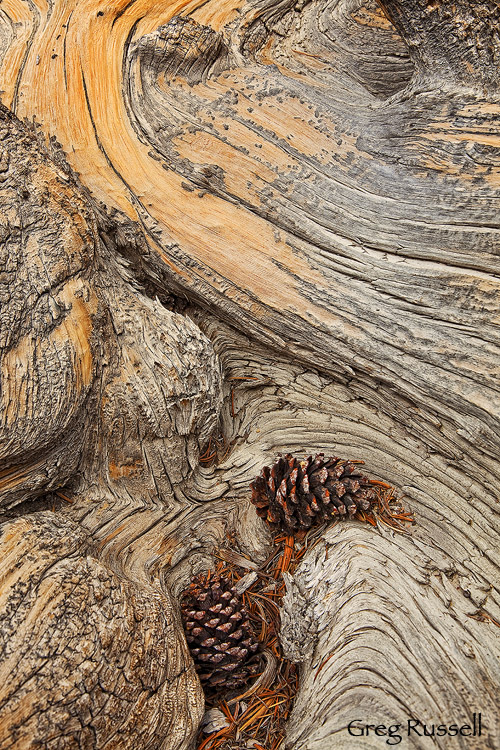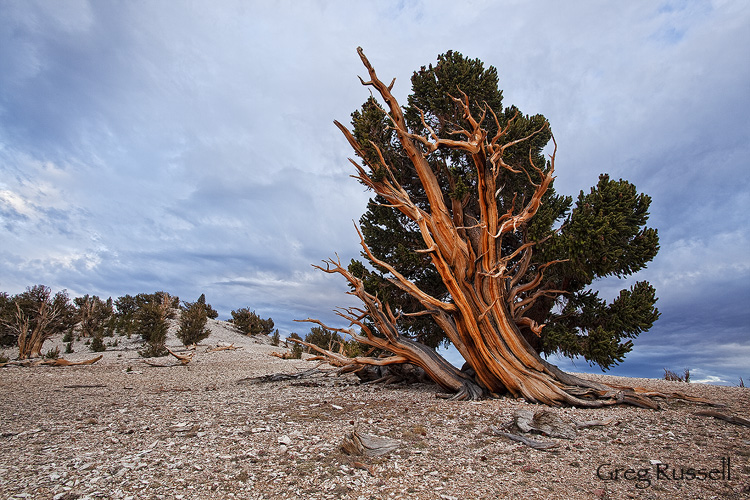Just a few posts ago, I mentioned how I spent several summers working in the White Mountains of eastern California when I was in graduate school. The Whites are an interesting mountain range. Comprising the eastern border of the Owens Valley, they are certainly imposing, with California’s 3rd highest peak (White Mountain Peak, 14,252′) as well the highest point in Nevada (Boundary Peak, 13,147′), but despite their prominence, the Whites are visited far less than the nearby Sierra Nevada.
The Sierra is a relatively wet mountain range, receiving anywhere from 20-80 inches of precipitation a year (for the arid west, that’s wet). The Whites, in the rain shadow of the Sierra, stand in stark contrast, fully embodying the characteristics of the Basin and Range province, to which they are included–dry, windy, desolate, and strikingly beautiful.
I have always loved the Whites, primarily because the lower elevations remind me of my home in northwestern New Mexico: piñon-juniper scrubland and sagebrush dominate the landscape, giving way to primarily lower-growing sage above about 8,000 feet. Deer, coyotes, wild horses, pika, and marmots are common here. However, the real draw–accounting for the bulk of visitation–is the presence of the Great Basin bristlecone pine (Pinus longaeva). With the exception of organisms that self-replicate (clones), bristlecones are the longest-living organisms on earth. One tree in the Whites, Methuselah, is estimated to be 4,500 years old. If the Whites have a persona of incredibly difficult growing conditions, then the bristlecones fit that quite well. Their gnarled trunks and otherworldly shapes are a favorite of photographers.
After nearly seven years away, I recently returned to the White Mountains. Walking around in the ancient bristlecone pine forest is an act of humility. Before leaving on my recent trip, a friend and I had a conversation about life and the value of living in the moment. This conversation was heavy on my mind as summer storm clouds moved through the Whites at sunset, giving these grand trees an equally grand backdrop.
Of all things on earth, these trees have given their best shot at living forever, and even they can’t quite do it. Once they die, the dry air preserves them leaving funky skeletons on several hillsides. What advice would they give, after 4,500 years, to someone just starting out? Would it be to live in the moment, to not let the little things get you down, and to hold close the things in life that make you deeply happy?
I’m anthropormorphizing a little bit more here than my contract allows, so I’ll stop. Suffice it to say, I think that’s pretty good advice.
We spent one night at 11,000′ in the bristlecones, and I was reminded of a few things that have kept the White Mountains on my mind all these years:
- Yes, it can snow in July in California. Even if only for a few minutes.
- The White Mountains are the only place I’ve ever experienced altitude sickness (manifested by trouble sleeping). I attribute it to the dry air.
- The warm-toned trunks of the bristlecones contrast very nicely with stormy skies.
- Everyone should experience quiet like the Whites afford once in their lifetime.
- Everyone should experience a night sky like the Whites afford once in their lifetime.
From a photographic point of view, I find it amazing that several images can come out of one place in a short amount of time. This is probably due to luck, inspiration, and visualization, but I have been updating my portfolios with new images and have added several from the White Mountains. Please visit my Mountains and Intimate Perspectives portfolios to see these and other new images.
It’s funny how some places can be a huge part of our lives, exit for several years, and then re-enter. I guess they never really leave us.





I’m with you–there’s something very special about that place (the altitude? the trees? the austerity?) that inspires serious introspection. I find it a deeply spiritual place, and hope to return there in a couple of months.
I really like the images you’ve shared here, especially the first one; it’s a beautifully composed detail shot.
Great post and images Greg.
The Whites and the Bristlecones really are special. The solitude up there is like no place else, and it does seem like those wise, old trees are more than willing to share their beauty before the lens.
Greg, I haven’t been to the Whites but love your descriptions (and images). I think I need to add them to the list!
Absolutely reminiscent of how I feel about favored locales here in the PNW (like Mt. Rainier).
Both the Intimate Perspectives and Mountains portfolios are great. Really fantastic images in there! The Whites images work really well in the Mountains portfolio, especially, I thought.
All beautiful shots Greg, though the first two are my favorite. The detail shot is a fantastic comp, and I love the way the clouds seem to radiate from the tree in number 2. I’d love to check out the Whites some day, they’ve always sounded like my kind of place!
Nice post. The other thing that strikes me from an anthromorphological point of view is that these trees live so long on the edge of survival in harsh conditions like the White Mtns. The same species grow in nicer conditions, like Bryce Canyon, but with plentiful water and a longer growing season, they rot and die after only a few centuries.
We spent a couple nights camping in the Whites back in 2005. They are a truly rugged, beautiful and desolate mountain range. I’d love to get back there again some time – sooner rather than later.
Fantastic images, Greg. The second one is exceptionally lovely.
No, they never leave us… we just leave them, at least for a while.
Great stuff. The detail and the sunset are particularly striking.
It would seem the lesson they teach is that if you want to live on forever, leave an interesting corpse that will reach into eternity through the many photographs and people that will study it. 🙂
I have always wanted to visit here Greg as I also find these trees fascinating. Love that first shot with the cones.
Some really interesting information about the Whites and great thoughts Greg. The whole area certainly looks like a fascinating place to shoot. I particularly like the second image. The way the branches of the Bristlecone reach out gives the whole image such a strong energy… also, the brownish orange color of the branches compliment the subtle blues in the sky perfectly.
This is another area I’ve always wanted to visit, every time I see images like this it only strengthens that desire!
Your affinity for this place shines in your beautiful photos. Interesting that it snowed too; a warning regarding the Sierra in late August or September…?
Thanks for the comments everyone! I appreciate you stopping by to look–it seems that this place is on everyone’s radar screen and with good reason. It really is special there.
Hope to be there someday Greg. It sounds like a magical place. All the images are great and certainly speak of the beauty to be appreciated, but, as you might imagine, I really like the “In The Details” close up.
I’ve seen gobs of images of these trees before, but Pastel Sunset is probably among the best I’ve seen. The light accompanying the tree in the background really is something special. Great post. The North Cascades have the same type of impact on me..awe and appreciation.
Thanks, Jeremy! I appreciate it! I can completely understand how a place can evoke feelings like awe and appreciation, but I’ve yet to visit the North Cascades…I hope I can sometime. The entire Pacific NW has been on my “to visit” list for some time now…